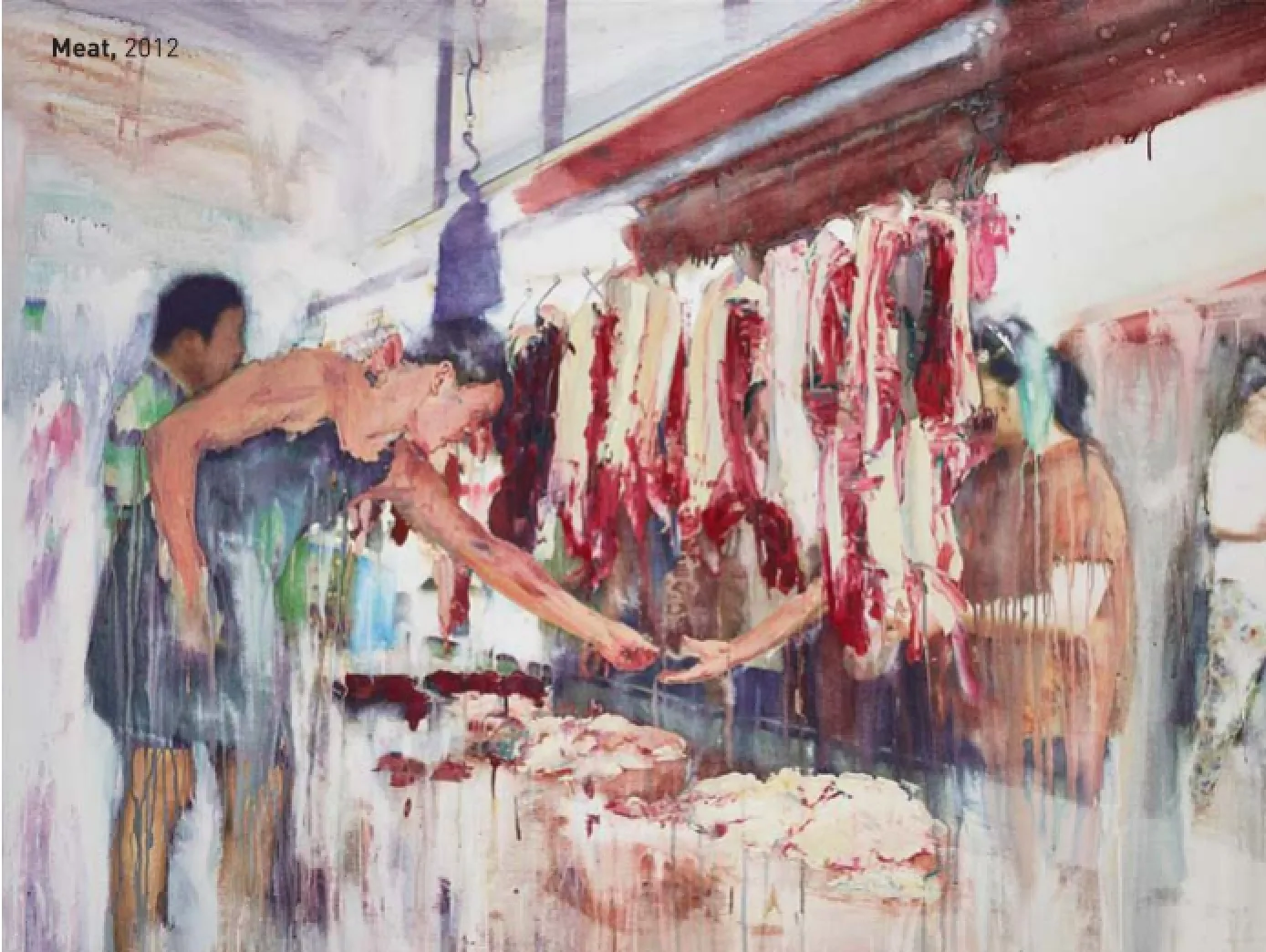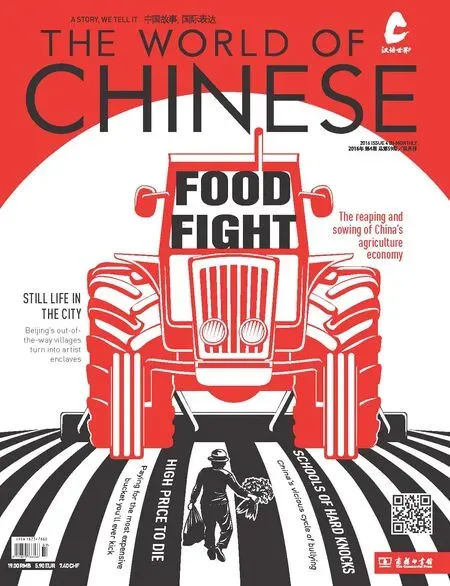WHAT IT MEANS TO BE ME
水墨丹青GAllERY
WHAT IT MEANS TO BE ME
How did you come to create your series “Flow ing Landscapes” and “M eat”?In 2008 I began a series of experiments w ith visual language. I co llected all kinds of imagery, including my own photographs, old photos I bought on line, magazine cutouts, and advertisements. In some of them I found clues to m y visual questions. I wou ld print photos onto canvases using techniques so they could be dissolved. Superfuous visual elements wou ld be removed, and m issing ones wou ld be added. “Flowing Landscape” is not about a landscape, rather a visual exploration. A still image is dead, but painting is alive. W hen painting interferes, the image becomes unp redictab le, alive, and graceful. Hence the nam e: scenery that fows. The “M eat” series was an exp loration into the body and uses the same techniques as “Flowing Landscape”, a reapp ropriation, or as some say, “deconstruction” of images.
How much has your p rintmaking background infuenced your work?
With printmaking, there is always a methodology. Only by calculating and follow ing a set of procedures can you achieve your expected visuals. These past few years, I was trying to perfect my methods. Now, I am trying to shake away compulsory methods to seek something new,so I've moved away from my previous techniques. Yet, I feel that what I am looking for has become more precise. One doesn't do contemporary art to do contemporary art;contemporary art and painting are not inclusive. To me,it's signifcant for works to have an aura, to see oneself in them.
Your works all seem to have a distinctive “Changsha”aura, almost as if one can feel the city's moisture in the air. They seem very personal, not necessarily specifc.

Xu Hongxiang (许宏翔)
Born and raised in Changsha, Hunan Province, Xu Hongxiang (许宏翔) studied printmaking at the China Central Academy of Fine Arts. Now based in Beijing, Xu mainly works in the medium of painting and is most well known for his “Flow ing Landscapes” (流动的风景) and “Meat” (肉) series.

流动的风景NO.3 150×200cm布面水性写真、油彩2015
You could say that. Very “local”. I use painting to look back and inwards. However, if I took them to New York, they would still work because I am not trying to be like Changsha, I simp ly am. One of the main leads I pursue is perhaps to inquire into myself, the past that adds up to be me. Although I moved to Beijing, my way of thinking is still in a Changsha state of m ind. To me, painting is not about making high art, or eye-catching art, it's about being oneself, being real,and putting one's feet f rm ly in the ground. So, a lot of my source materials are ordinary objects and scenes. Earlier this year, I went home and exhibited my paintings on the walls of demolished buildings in Changsha, but not as cries against demolition or urbanization. I saw visual language, not demolished ruins. It was purely a personal act, to see my paintings—fruits born because I left home to study—interact with the lower class streets where I grew up.
M y works are me. I am not into making refned or pretty works, and refuse strong narratives and specifc references such as 红领巾, or the red scarf. I try to distinguish between imagery that interest me and imagery connected to me. One shouldn't try to become a stereotype to f t characterizations, such as the trend of Peking Opera imagery. M any confuse interests with what they are. Some artists create sim ilar works because they share similar interests. We all share sim ilar experiences, watch sim ilar TV shows, and read sim ilar news stories, which leads to similar interests—hence, similar languages of drawing. I am especially wary of this pitfall. Who am I? What I want to explore is myself, which you could say is human nature. The self is human nature.
- WEIJING ZHU (祝伟婧)

